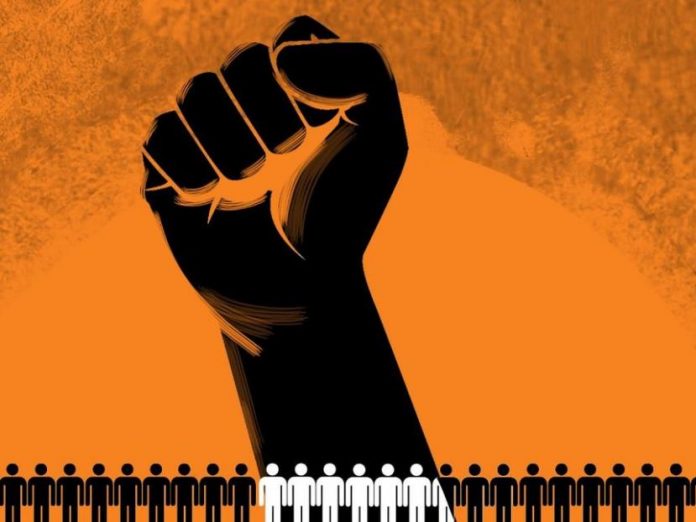The article has been authored by Anshika Agarwal, from VIPS, New Delhi. The article talks about the long road undertaken by India’s judicial system to attain an assertive judiciary and an active judicial system in the form of PILs. The author sets forth a picture of the different forms of judicial activism existing worldwide and how it led to the evolution of PILs in India.
Table of Contents
Introduction
What if the Indian judiciary fails to address the human rights violation contentions of the underprivileged sections of the society? What if it does not take cognizance of issues centring public interest? What if it becomes passive in rendering decisions and interpreting the lawmakers’ ideas? The Constitution would simply lose out on its basic principles of social, economical and political justice. The people would lose out on their faith over the legal system of the country. And lastly, the country would enter into a state of anarchy.
Had it not been for the concept of judicial activism in the disguise of Public Interest Litigation, India would not have experienced some of the revolutionary changes in its legal system. The Sexual Harassment of Women at Workplace (Prevention, Prohibition and Redressal) Act 2013, a wholesome interpretation of Article 21 including freedom from noise pollution as a right to life, stricter guidelines under the Poison Act 1919 are some of the constructive consequences of PIL petitions.
The independence of the judiciary lies in its assertiveness to review and interpret the legislative and executive actions. From guarding the constitutionality of the legal system to regulating the actions of governmental and non-governmental institutions, the role of active judiciary cannot be dispensed with. Judicial activism hence forms the founding institution of constitutionalism and democracy.
Judicial activism
As quoted by Black Law’s Dictionary, judicial activism is the “philosophy of judicial decision-making whereby judges allow their personal views about public policy, among other factors, to guide their decisions.” On the other hand, Merriam Webster defines judicial activism as “the practice in the judiciary of protecting or expanding individual rights through decisions that depart from the established precedent or are independent of or in opposition to supposed constitutional or legislative intent.”
However, the term “judicial activism” opens a gateway to a plethora of interpretations. Each country follows a particular form of activism, suiting its legal system. For instance, the judicial activism in the USA referred to as judicial review, is mainly characterised by active judiciary coming up with rulings like in the case of Brown v. Board of Education. Herein, the US Supreme Court invalidated the State made laws that promoted racial segregation in public schools. In another case of Roe v. Wade, the apex Court of the USA again turned down the State’s long-prevailing abortion laws while protecting the women’s liberty in cases of abortion, without much of State’s intervention. These pronouncements provide a picture of an assertive judiciary prevailing in the country. The true essence of judicial activism in the country thus can be determined by looking at the legal system of the country.
The worldwide debate on judicial activism
The term “judicial activism”, finds its origin in an article titled “The Supreme Court: 1947” authored by Schlesinger. Schlesinger viewed judicial activism as a measure to mould law, believing law as a means to realise the social good. However, no definite view was propagated by him, regarding the positive and negative aspects of judicial activism. As a result, the topic garnered controversies in the following years.
Even today, the topic continues to be an epicentre of worldwide debates. The conservatives have held opposing views, regarding judicial activism as a violation of the separation of powers. The liberals, on the other hand, have propagated the concept by regarding it as a check on the corrupt legislative and executive actions. However, the extent and nature of judicial activism depend upon the legal system prevailing in the country. For instance, judicial activism is more profoundly observed in Canada as compared to the USA. It is for the same reason that the judiciary in Canada is often accused of making unreasonable decisions based on their personal thoughts and reasoning.
The legal framework of the country hence plays an imperative role in determining the nature of activism. In a country like India, the judiciary works on the principle of complying with the ideas and intentions of lawmakers that existed while framing an enactment, in the course of rendering judgements. This forms the essence of activism while making it a mandatory feature of the Indian Constitution.
Status of judicial activism in India
The concept of judicial activism in India records its existence since the inception of the Indian Constitution. The Constitution conferred the Supreme Court with the binding authority over the subordinate courts by the way of Article 141. Article 226 and Article 32 further confirmed the assertiveness of the judiciary by providing the people with the right to move to the courts in case of an infringement of the fundamental rights. Article 226 had a broader scope and also included legal rights.
The classical law, however, limited this right by imposing the rule of locus standi. The term locus standi or the right to move to the court generally implies that there should be a sufficient nexus between the harm of law contended in the court and the party instituting such contention. Traditionally, the rule curtailed the right to seek remedy from the courts to affected persons or those having a connection with such persons. It allowed the courts to dismiss the petition without even considering its merits if the case lacked standing. It was until the evolution of public interest litigations that the scope of locus standi was widened to include public interest standing, with a sole aim of consolidating the socio-legal justice system.
The underprivileged societal elements now had easier access to the courts through the public-spirited persons and entities. However, the right to seek a remedy through public interest standing was limited to constitutional wrongs and did not include the civil wrongs.
Evolution of PIL
The origin of PILs can be traced back to the USA where the prime focus is generally laid on promoting public participation to achieve social welfare ends rather than targeting governmental repression. However, the concept substantially differs in India. Professor Upendra Baxi in his publication “Social Action Litigation in the Supreme Court of India” opines that the concept has “assumed the character of more of a moral and humane process in providing justice to the victim as in individual or to a group”. He believes that since the Indian notion of PIL is based on the principles of social equity and justice, it should be renamed as socio-legal action.
Prior to the 1980s, the Indian judicial system was in its elementary stage. The emergency period of 1975-1977 was characterised by governmental repression and a total disorder in the State machinery. The constitutional and civil rights of the political as well as non-political elements were severely crushed by the then government. Post the emergency, the political picture of the country underwent a tremendous change. The journalism of the country gained momentum. As a result, there were continuous instances of the governmental institutions involved in custodial violence and other such corrupt practices, being exposed at the hands of the media.
Subsequently, two pioneers of the Indian Judiciary namely Justice V.R. Krishna Iyer and Justice P.N. Bhagwati took cognizance over this issue and worked towards easier availability of justice by the masses. It was in the case of Mumbai Kamgar Sabha v. Abdul Thai that the founding stone of the concept of PIL was laid in India. Herein, the collective interests of the workmen employed in the Nag Devi locality, represented by a Union named Mumbai Kamgar Sabha, were challenged on the grounds of lack of standing in the Court. Justice Krishna Iyer in this judgement opined, “Test litigations, representative actions, pro bono publico and like broadened forms of legal proceedings are in keeping with the current accent on justice to the common man and a necessary disincentive to those who wish to bypass the real issues on the merits by suspect reliance on peripheral procedural short-comings”. Articles 226 and 32 were looked in their wider sense and as a result, the Union was permitted to institute the petition for the redressal of the common workers’ grievances. This marked the initiation of the concept of public interest litigations.
It was finally in 1979 that the first-ever recorded case of PIL named Hussainara Khatoon v. The State of Bihar came up. In 1978, Khusrao Rustamji, a member of the National Police Commission, visited the jails of Bihar and studied the brutal condition of the under-trial prisoners. Based on his studies, he authored two articles and got them published in a national daily, Indian Express. As a result, the articles managed to secure nationwide attention. Eventually, a petition based on the newspaper readings was filed under Article 32 by a Supreme Court practitioner, Kapila Hingorani. Since the concept of PILs was still in its rudimentary stage and had found its mention only as citations in the judgements, it was for the first time that an actual petition was filed in the general public interest. As a result, the petition was allowed to be heard in the Court and was presented before a bench headed by Justice P.N. Bhagwati. The judgement, however, brought some of the constructive revolutionary changes in the legal system of the country. Right to free legal aid as propounded under Article 39 A constituting an essential ingredient of “reasonable, just and fair procedure”, was held implicit under Article 21. The horizons of Article 21 were further widened to include Right to a speedy trial within its ambit. The judgement further led to the release of around 40,000 under trial prisoners from the jails of Bihar.
Further clarity on the concept was brought in by Justice P.N. Bhagwati in the case of S.P. Gupta v. Union of India. Herein, the locus standi of the writ petitions, challenging the Executive orders related to the appointment and transfer of Judges, was questioned before the Hon’ble Supreme Court. The respondents in one of their contentions raised that since there was no legal injury personally suffered by the petitioners as a result of the circulars issued by the Central Government, the petitions stand unconstitutional. The judgement, however, turned down the aforesaid contentions, thereby confirming the standing of the petitioners as public-spirited persons. It talked about utilising the zeal and initiative of the public-spirited persons in order to promote social “collective” interests and to guard public rights. The apex court said, “It is for this reason that in public interest litigation –litigation undertaken for the purpose of redressing public injury, enforcing public duty, protecting social, collective, ‘diffused’ rights and interests or vindicating public interest, any citizen who is acting bona fide and who has sufficient interest has to be accorded standing.” Thus, any person acting in a public bono interest would not be denied of standing in the court.
Conclusion
Post-1980s, the country’s judicial system observed a radical change. Now “justice” was attained in its literal sense by the way of PILs. Not only was the redressal of public grievances made easier but also cheaper as a fixed nominal court fee was the only investment that was required. This opened the gateway for a plethora of NGOs and Human Rights Organisations to take cognizance of the constitutional rights of the poor and underprivileged masses and represent them in the Court of law.
However, the concept brought in certain drawbacks with itself. PILs paved the way for frivolous cases and were soon used as a tool to harass big political figures and corporates. The low investment costs led to the burdening of Courts with fake cases. This called for the need to release certain guidelines to this effect. The apex Court to this effect cleared that only “bona fide” intention should be the driving force behind a petition. It should not be an outcome of personal profit or an ulterior motive.
References
- https://www.india.gov.in/sites/upload_files/npi/files/coi_part_full.pdf
- http://legislative.gov.in/sites/default/files/A2013-14.pdf
- https://www.indiacode.nic.in/bitstream/123456789/5751/1/the_poisons_act%2C_1919.pdf
- https://www.casemine.com/judgement/us/5914ca28add7b049347f82fe
- https://www.foxnews.com/projects/pdf/roevwade.pdf
- https://www.jstor.org/stable/3481421
- https://www.researchgate.net/publication/254716513_Taking_Suffering_Seriously_Social_Action_Litigation_in_the_Supreme_Court_of_India
- https://artdary.net/get/ebook.php?id=weU2AQAAIAAJ&title=Black%27s%20Law% 20D Itionary&author=Bryan%20A.%20Garner&date=2009&isbn=STANFORD:36105134451157&publisher=West%20Legalworks
LawSikho has created a telegram group for exchanging legal knowledge, referrals and various opportunities. You can click on this link and join:
 Serato DJ Crack 2025Serato DJ PRO Crack
Serato DJ Crack 2025Serato DJ PRO Crack











 Allow notifications
Allow notifications



